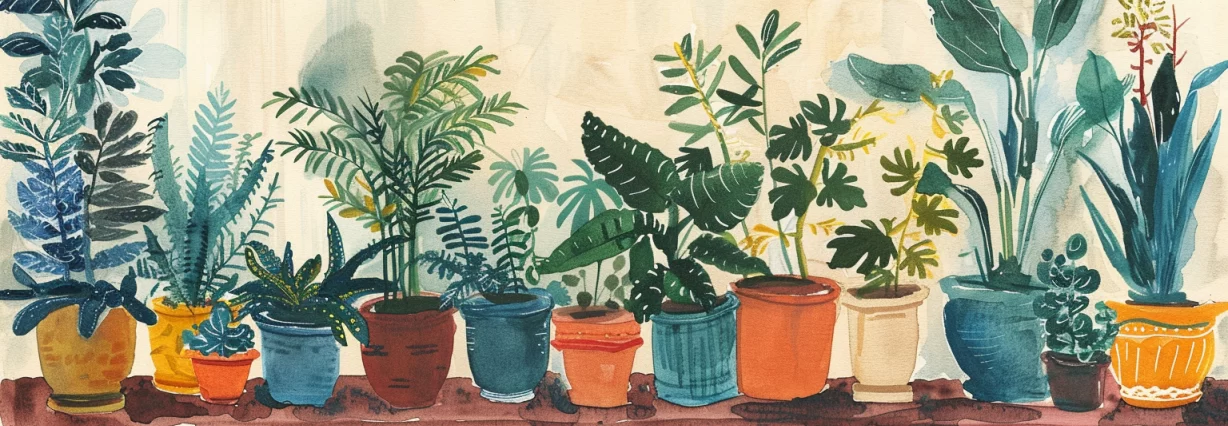Houseplants are a great way to bring a touch of nature indoors and improve the air quality of your home. However, not all houseplants are created equal, and some may thrive better in certain rooms than others. Finding the best houseplants for your space can be challenging, but with a bit of research and consideration, you can find the perfect plant to suit your needs.
When choosing a houseplant, it’s essential to consider the lighting, humidity, and temperature of the room it will be placed in. Some plants prefer bright, direct sunlight, while others thrive in low-light conditions. Similarly, some plants require high humidity levels, while others can tolerate drier air. By considering these factors, you can narrow down your options and choose a plant that will look great in your space and thrive in its environment.
Whether you’re looking for a statement piece for your living room or a small plant to brighten up your bathroom, a houseplant is perfect for your needs. With a little research and attention to detail, you can find the best houseplants for your specific room and enjoy all the benefits of having plants in your home.
Understanding Your Space
When it comes to finding the best houseplants for your specific room, it’s important to understand the unique characteristics of each space. Factors such as lighting, humidity, and temperature can significantly impact the health and growth of your plants.
Living Room
The living room typically has large windows and plenty of natural light. Plants that thrive in direct light, such as succulents and cacti, are great options for this room. If your living room doesn’t get a lot of direct sunlight, consider plants that can thrive in medium to low-light conditions, such as pothos or snake plants.
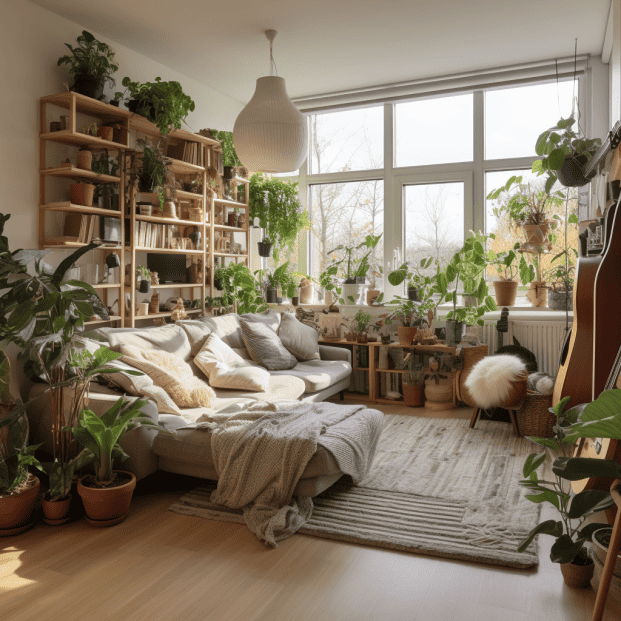
Bedroom
The bedroom is often a low-light space, making it challenging to find plants that will thrive. However, there are still plenty of options available. Plants such as peace lilies and spider plants can tolerate low-light conditions, while snake plants and aloe vera can also help purify the air.
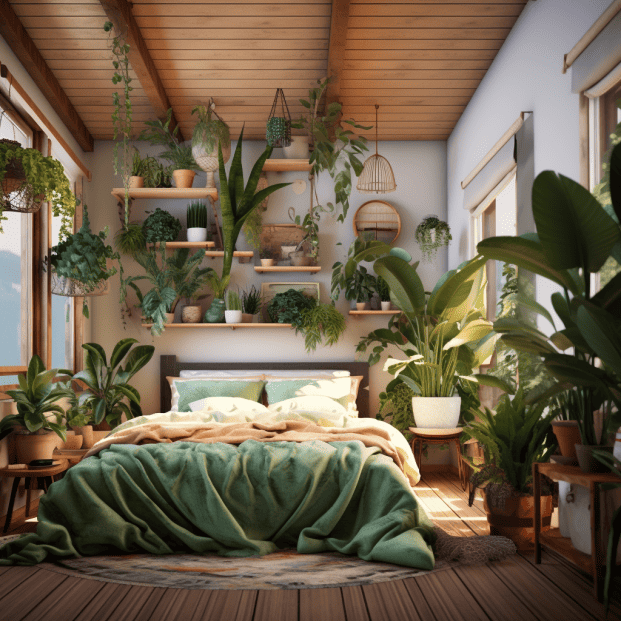
Office
The office is typically a well-lit space with artificial lighting. Plants that can tolerate low to medium light conditions, such as ZZ plants or dracaenas, are great options for this space. If your office gets a lot of natural light, consider a plant that can thrive in direct sunlight, such as a rubber plant or fiddle leaf fig.
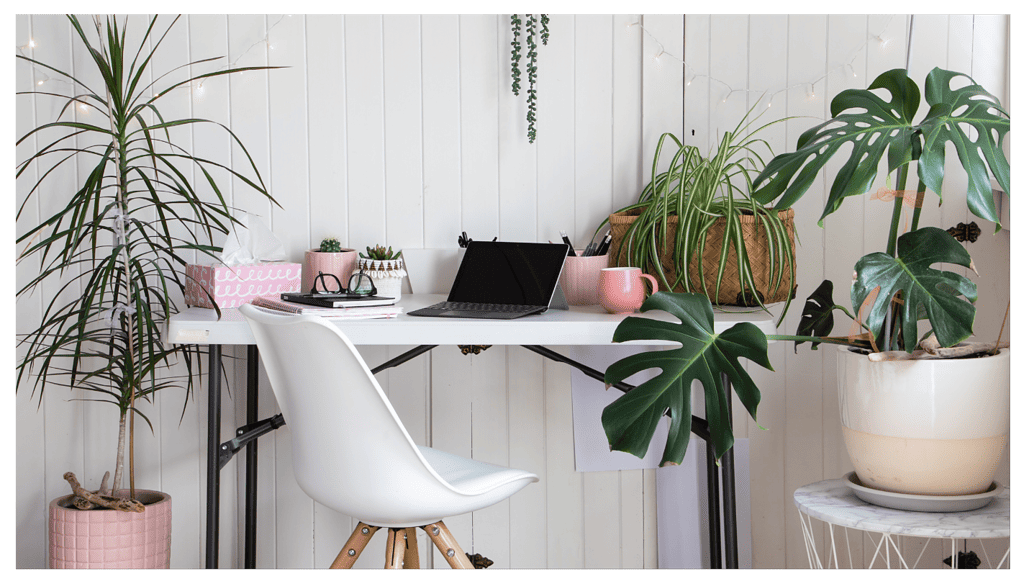
Bathroom
Bathrooms are often high-humidity spaces, which can be challenging for some plants. However, there are plenty of options that can thrive in this environment. Plants such as ferns and orchids can tolerate high humidity, while snake and ZZ plants can also do well in this space.

Kitchen
Kitchens are often well-lit spaces with plenty of natural light. Plants that can thrive in direct sunlight, such as herbs or succulents, are great options for this space. If your kitchen doesn’t get a lot of direct sunlight, consider plants that can tolerate medium to low-light conditions, such as spider plants or pothos.
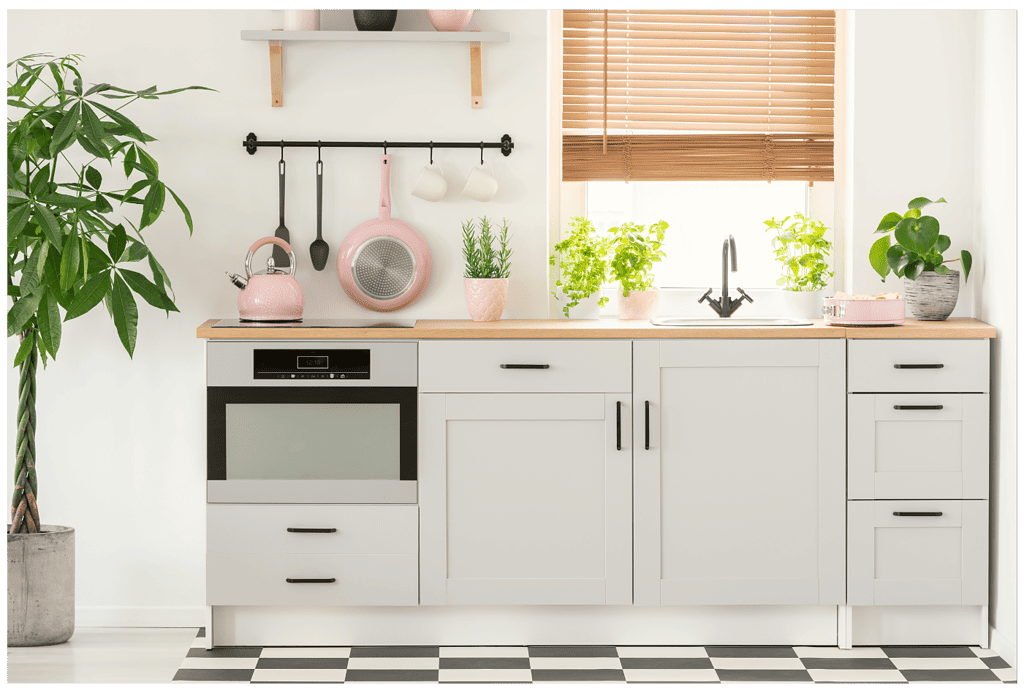
Dining Room
The dining room typically has large windows and plenty of natural light. Plants that thrive in direct light, such as succulents or cacti, are great options for this room. If your dining room doesn’t get a lot of direct sunlight, consider plants that can tolerate medium to low-light conditions, such as snake plants or peace lilies.
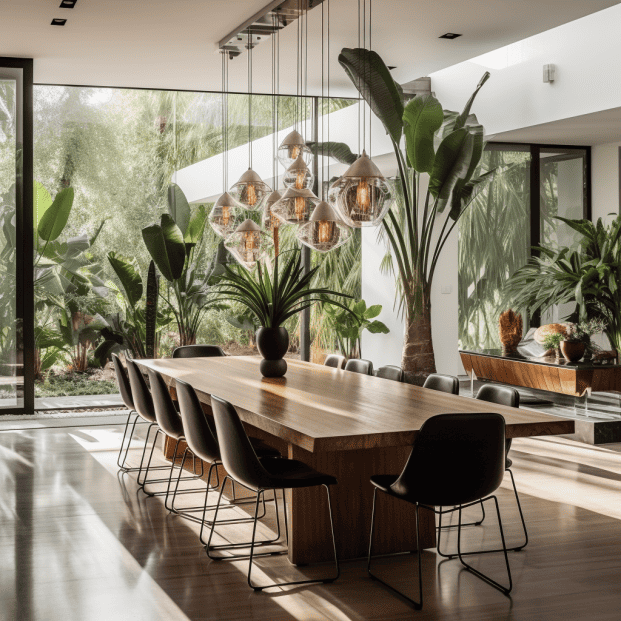
Overall, when choosing houseplants for your specific room, it’s essential to consider the unique characteristics of the space, including lighting and humidity levels. With the proper plant selection, you can create a healthy and vibrant indoor garden that will thrive in any room of your home.
Choosing the Right Houseplants
Selecting the perfect houseplant for each room in your home can be challenging. When choosing a houseplant, consider the room’s lighting, humidity, and temperature. Some plants thrive in bright, direct light, while others prefer low or indirect sunlight. Some plants require more humidity than others, and some prefer cooler temperatures.
One popular houseplant is the snake plant, also known as Sansevieria. It is an excellent choice for bedrooms as it releases oxygen at night, making it ideal for improving air quality while sleeping. Spider plants are another great option for bedrooms, as they are known to purify the air and remove toxins.
Pothos is a versatile plant that can thrive in various lighting conditions, making it an excellent choice for any room. It is also known for its air-purifying abilities, making it an excellent choice for offices and living rooms. The Monstera plant is another popular choice for living rooms, as its large, unique leaves add a tropical flair to any space.
Dracaena is a low-maintenance plant that can thrive in low-light conditions, making it perfect for bedrooms and bathrooms. Aloe vera is a popular choice for kitchens, as it has medicinal properties and is easy to care for. The peace lily is another excellent option for kitchens, as it can help purify the air and remove toxins.
The bird of paradise is a stunning plant that can add a touch of elegance to any room. It requires bright, indirect light and high humidity, ideal for bathrooms and sunrooms. Ferns are also great for adding a touch of greenery to bathrooms, as they thrive in high-humidity environments.
The ZZ plant is a low-maintenance option that can thrive in low-light conditions, making it perfect for offices and bedrooms. Peperomia is another low-maintenance option that can thrive in various lighting conditions, making it an excellent choice for any room. The Swiss cheese plant, also known as Monstera adansonii, is a popular choice for bedrooms and living rooms, as its unique leaves add a touch of personality to any space.

Air plants are unique in that they do not require soil to grow. They can thrive in various lighting conditions and are perfect for adding a touch of greenery to any room. The rubber plant is another great option for living rooms, as it can grow up to 8 feet tall and adds a bold statement to any space. Cyclamen is a popular choice for adding color to any room, producing vibrant blooms in various colors.
The fiddle-leaf fig is a popular choice for living rooms, as its large, glossy leaves add a touch of elegance to any space. Philodendrons are another popular option for living rooms, as they can thrive in low-light conditions and require minimal care.
In summary, there are many different houseplants, each with unique requirements and benefits. Consider each room’s lighting, humidity, and temperature when selecting the perfect houseplant for your home.
Caring for Your Houseplants
Taking care of houseplants is essential to keep them healthy and thriving. Proper maintenance, watering, and care ensure your plants grow and flourish. Here are some tips to help you care for your houseplants:
Maintenance
Regular maintenance is crucial for the health of your houseplants. You must regularly check your plants for signs of pests, disease, or other issues. Remove dead leaves or flowers, and prune your plants to promote healthy growth.
Watering
Watering your houseplants is critical, but it is equally important not to overwater them. Overwatering can lead to root rot and other problems. It is best to water your plants when the soil is dry to the touch. Be sure to use distilled water or filtered water to avoid any harmful chemicals that may be present in tap water.
Plant Care
Different plants have different care requirements. It is essential to research the specific care needs of your houseplants to ensure that you provide them with the proper care. Some plants require more sunlight than others, while some prefer filtered light. Be sure to place your plants in the appropriate location to ensure that they receive the proper amount of light.
Distilled Water
Using distilled water for your houseplants can help prevent the buildup of minerals and other harmful chemicals that may be present in tap water. Distilled water is also free of any harmful bacteria that may be present in tap water. Be sure to use distilled water or filtered water when watering your plants.
Filtered Light
Filtered light is ideal for many houseplants. Direct sunlight can be too intense for some plants, while others may not receive enough sunlight in a shaded area. Be sure to place your plants where they receive the appropriate amount of filtered light.
In conclusion, caring for your houseplants is essential to keep them healthy and thriving. Proper maintenance, watering, and care ensure your plants grow and flourish. Be sure to research the specific care requirements of your houseplants and provide them with the appropriate care.
Benefits of Having Houseplants
Having houseplants can provide numerous benefits beyond just adding decoration to a room. Here are some of the benefits that houseplants can bring to your home:
Purify the Air
Houseplants can help purify your home’s air by removing toxins and pollutants. According to a study by NASA, certain houseplants can remove up to 87% of air toxins in just 24 hours. This can lead to improved air quality and a healthier living environment.
Provide Oxygen
Houseplants can also provide oxygen to your home. Through photosynthesis, plants take in carbon dioxide and release oxygen. This can help improve your home’s air quality and make it a more comfortable living space.
Boost Moods
Research has shown that having houseplants can boost moods and improve overall well-being. Being around plants can help reduce stress and anxiety levels and improve concentration and productivity.
Improve Air Quality
In addition to purifying the air, houseplants can also help to improve air quality by increasing humidity levels. This can be especially beneficial during winter when indoor heating can cause dry air.
Overall, houseplants can provide numerous benefits to your home and well-being. You can create a healthier and more comfortable living environment by choosing the right plants for your specific room.
Creating Focal Points with Plants
Plants can be used to create focal points in any room. Large plants can draw the eye and add a touch of luxury to a living room, while a group of closely spaced plants can create a wild and lush atmosphere in any space.
When choosing plants for focal points, it’s essential to consider the scale of the furniture pieces in the room. Large plants work well in rooms with more oversized furniture, while smaller plants are better suited for smaller spaces.
In addition to adding a pop of color, plants with varying textures can complement one another and create a cohesive look. For example, a mix of foliage plants can brighten up any room and add a touch of greenery.
When creating a focal point with plants, it’s essential to consider the lighting in the room. Some plants require bright light, while others thrive in low-light conditions. It’s also important to consider the temperature and humidity levels in the room, as some plants require specific conditions to thrive.
Overall, creating a focal point with plants is a great way to add natural beauty to any space. You can create a lush and inviting atmosphere that will impress you by choosing plants with varying textures and colors.

Low-Maintenance Houseplants
Low-maintenance houseplants are a great option for those who need more time or energy to devote to plant care. These plants require minimal watering and maintenance, making them perfect for busy individuals or those new to plant care.
One popular type of low-maintenance plant is the succulent. Succulents are known for storing water in their leaves, making them drought-tolerant and easy to care for. They come in a variety of shapes and sizes and can be placed in almost any room of the house. Some popular succulent types include the jade plant, aloe vera, and the snake plant.
Another low-maintenance option is the cactus. Like succulents, cacti are also drought-tolerant and require minimal watering. They come in various shapes and sizes and can add a unique touch to any room. Some popular cactus varieties include the barrel cactus, the prickly pear cactus, and the Christmas cactus.
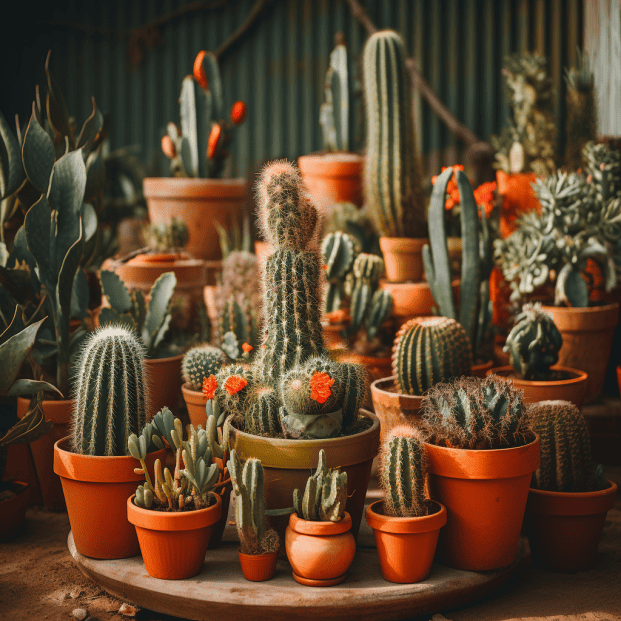
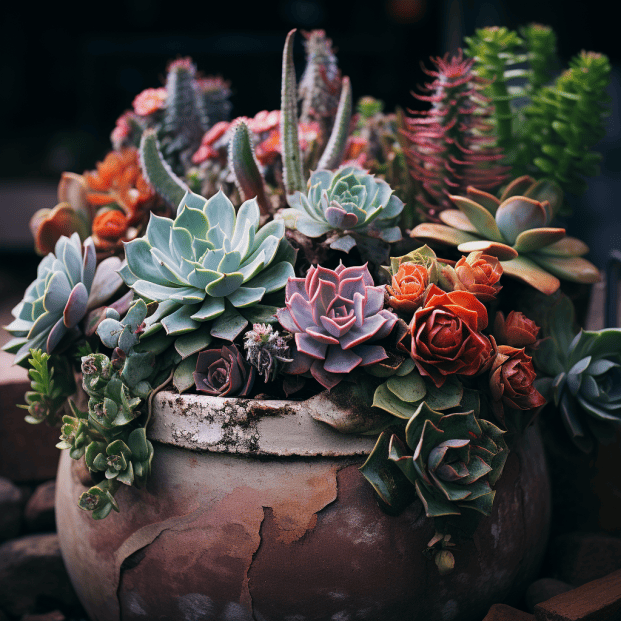
Air plants are another great option for those looking for low-maintenance houseplants. These plants don’t require soil and can be placed in a variety of containers, making them a versatile choice. They also require minimal watering and can be placed in low-light areas.
For those looking for low-light plants, there are several options available. The ZZ plant, snake plant, and peace lily are all great choices for low-light areas. These plants can thrive in areas with minimal natural light, making them perfect for rooms that don’t receive a lot of sunlight.
Overall, many low-maintenance houseplants are available that can add a touch of greenery to any room without requiring much care. From succulents and cacti to air plants and low-light options, there’s a plant out there for everyone.

Growing Herbs Indoors
Growing herbs indoors can be a great way to add some greenery to your home while also having fresh herbs on hand for cooking. Most herbs can be grown indoors, but some thrive better than others. Here are a few herbs that are great for growing indoors:
- Basil: This tender herb needs at least eight hours of sunlight daily to thrive. Keep it warm in your home, near a sunny window or under grow lights. Soil pH should be between 6.0-7.0 for best results.
- Chives: Chives are easy to grow and can be used in various dishes. They prefer slightly acidic soil with a pH between 6.0-6.5, and need at least six hours of sunlight daily.
- Mint: Mint is a hardy herb grown in various conditions. It prefers slightly acidic soil with a pH between 6.0-7.0, and needs at least four hours of sunlight daily.
- Oregano: Oregano is a flavorful herb that can be grown indoors year-round. It prefers slightly alkaline soil with a pH between 7.0-8.0, and needs at least six hours of sunlight daily.
- Thyme: Thyme is a fragrant herb that can be grown indoors with the right conditions. It prefers slightly alkaline soil with a pH between 7.0-8.0, and needs at least six hours of sunlight daily.
When growing herbs indoors, choosing the right containers and soil is important. Use a well-draining potting mix, and make sure your containers have drainage holes to prevent root rot. Water your herbs regularly, but be careful not to overwater them.
In addition to providing fresh herbs for cooking, growing herbs indoors can also help purify the air in your home. Some herbs, such as rosemary, have been shown to improve air quality by removing harmful toxins.
Overall, growing herbs indoors is a great way to add some greenery to your home while also having fresh herbs on hand for cooking. With the right conditions and care, you can enjoy a variety of herbs year-round.

Understanding Toxic and Non-Toxic Plants
When selecting houseplants for your home, it is important to consider the safety of your pets. Some plants can be toxic to cats and dogs, causing symptoms such as vomiting, diarrhea, and even seizures. Understanding the difference between toxic and non-toxic plants is crucial to ensure your furry friends’ health and safety.
Toxic Plants
Toxic plants contain chemical substances that can cause harm to animals when ingested or even just touched. Some common toxic houseplants include:
- Philodendron
- Dieffenbachia
- Pothos
- Snake Plant
- Peace Lily
- ZZ Plant
If you have pets, avoiding these plants or keeping them out of reach is best. Symptoms of toxicity can range from mild to severe and, in some cases, can be fatal. If you suspect your pet has ingested a toxic plant, seek veterinary care immediately.

Non-Toxic Plants
On the other hand, non-toxic plants are safe for pets to be around. They do not contain any chemicals that can cause harm if ingested or touched. Some examples of non-toxic houseplants include:
- Spider Plant
- Boston Fern
- African Violet
- Bamboo Palm
- Money Tree
These plants are great options for pet owners who want to add greenery to their homes without worrying about furry friends.
It is important to note that even non-toxic plants can cause gastrointestinal upset if ingested in large quantities. Always supervise your pets around plants and seek veterinary care if you suspect they have eaten any plant material.
In summary, when selecting houseplants for your home, it is crucial to consider the safety of your pets. Avoid toxic plants and opt for non-toxic options instead. Always supervise your pets around plants and seek veterinary care if you suspect they have ingested any plant material.
Creating a Terrarium
Terrariums are a great way to bring a touch of nature indoors and create a mini-ecosystem in your home. They are also an excellent option for those who want to add some greenery to their space but need more room to spare. Creating a terrarium is a simple and fun project that can be done in just a few hours.
You will need a few basic supplies to create a terrarium, including a container, moss, pebbles, and plants. The container can be any clear glass or plastic vessel, such as a jar, bowl, or vase. The moss and stones will be used to create a base layer in the container, which will help with drainage and prevent the plants from sitting in water.
When selecting plants for your terrarium, it’s important to choose varieties that will thrive in the specific conditions of your room. Some plants prefer bright, direct sunlight, while others prefer indirect light or shade. Some plants also prefer high humidity, while others can tolerate drier conditions.
Some great plant options for a terrarium include ferns, mosses, succulents, and small tropical plants. Fittonia is a popular choice for terrariums because of its colorful foliage and love for high humidity. Other great options include Pilea and Riccardia.

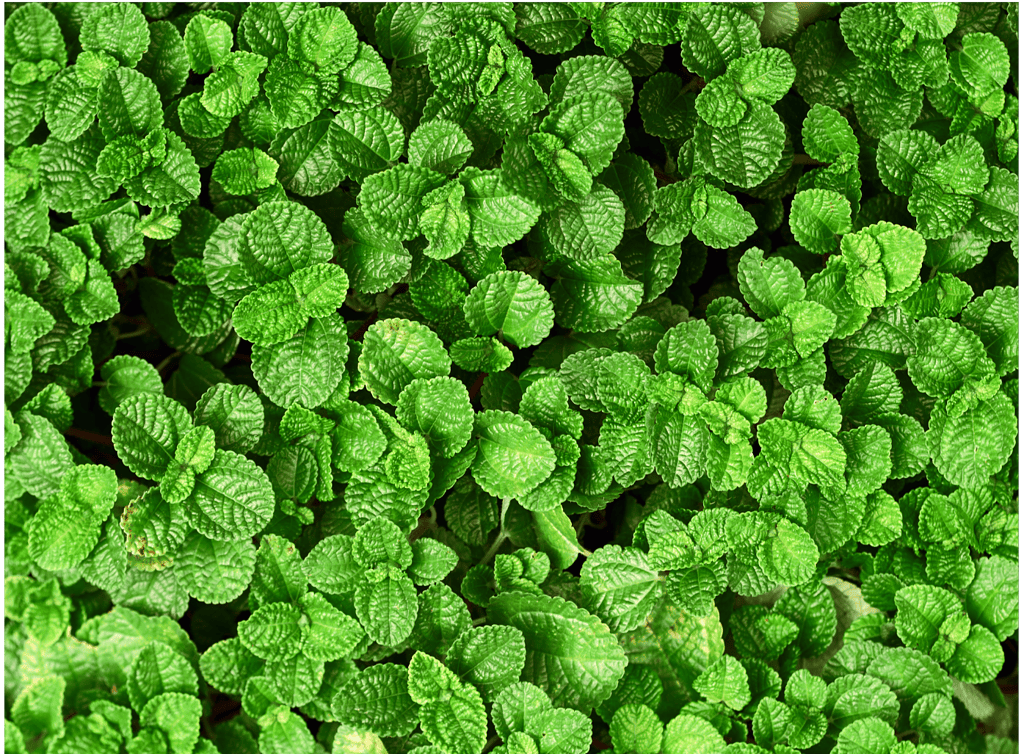
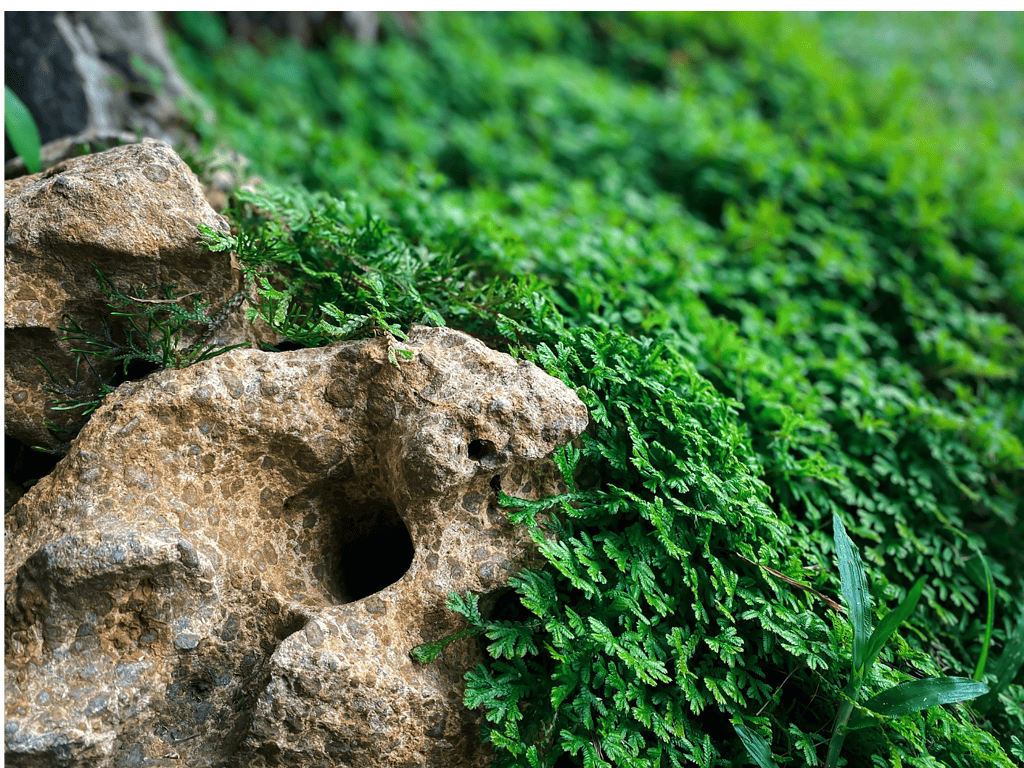
Once you have gathered your supplies and selected your plants, it’s time to assemble your terrarium. Begin by adding a layer of pebbles to the bottom of the container, followed by a layer of moss. This will help with drainage and prevent the soil from becoming waterlogged.
Next, add a layer of potting soil on top of the moss. Be sure to leave enough space at the top of the container for your plants. Carefully arrange your plants in the ground, taking care not to overcrowd them. Once you are happy with the arrangement, add a final layer of moss on top of the soil to help retain moisture.
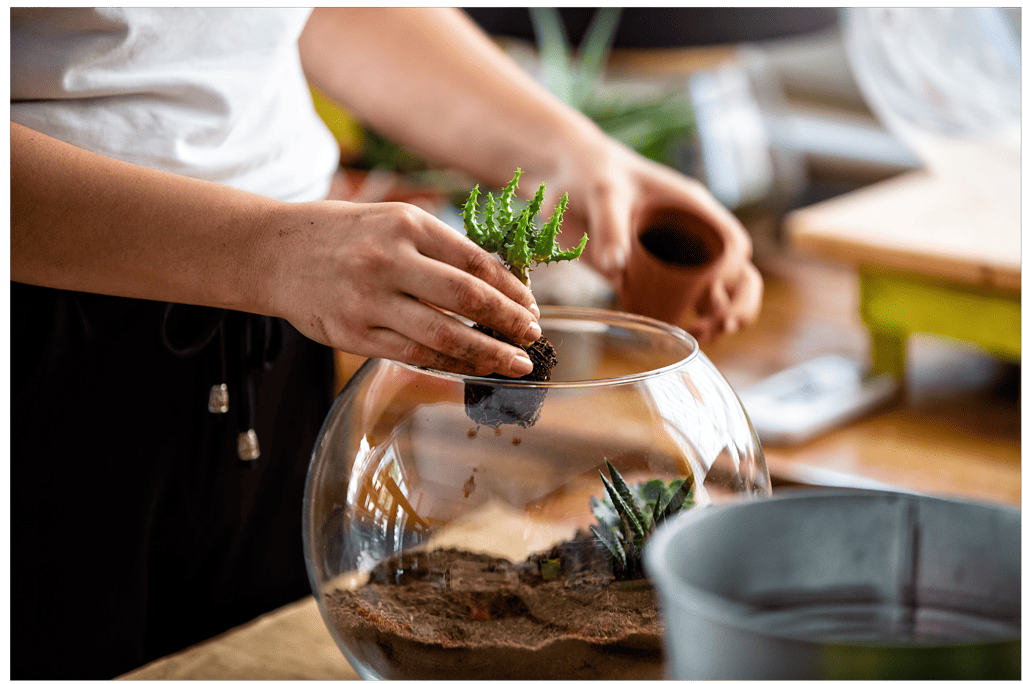

Water your terrarium sparingly, as overwatering can lead to root rot. Monitor the plants regularly and trim any dead or yellowing leaves as needed. With proper care, your terrarium can thrive for years to come.
In conclusion, creating a terrarium is a simple and rewarding way to bring greenery into your home. With a few basic supplies and carefully selected plants, you can create a mini-ecosystem to brighten up any room. Just be sure to choose plants that will thrive in the specific conditions of your space and provide them with proper care and attention.
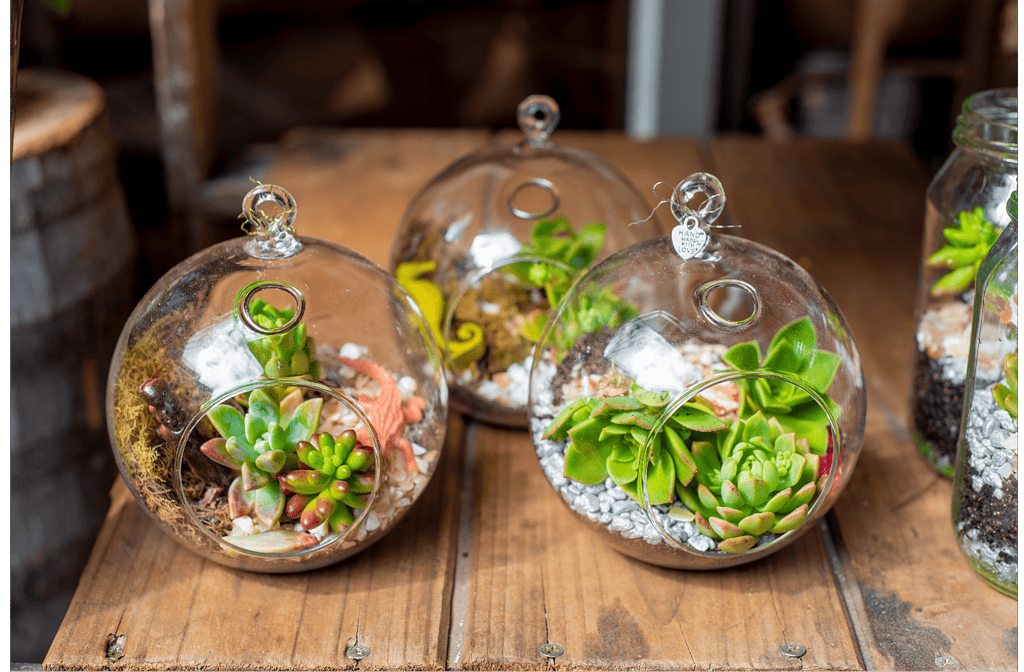

Dealing with Common Plant Pests
Even the most attentive plant owners may encounter pests on their houseplants. Common pests include scales, mealybugs, spider mites, whiteflies, and aphids. These pests can weaken plants by feeding on their sap or causing damage to their leaves.
The first step in dealing with plant pests is to identify the problem. Examine the leaves, stems, and soil for any signs of pests. Some pests, like aphids and whiteflies, can be seen with the naked eye, while others, like spider mites, may require a magnifying glass to spot.
Once the pest has been identified, there are several methods for dealing with them. One option is to physically remove the pests by wiping them off with a damp cloth or pruning the affected leaves or stems. For larger infestations, insecticidal soap or horticultural oil can be used to suffocate the pests.
Another option is to introduce natural predators to the plant. Ladybugs, lacewings, and predatory mites are all insects that feed on common plant pests. These predators can be purchased online or at a local garden center and released onto the affected plant.
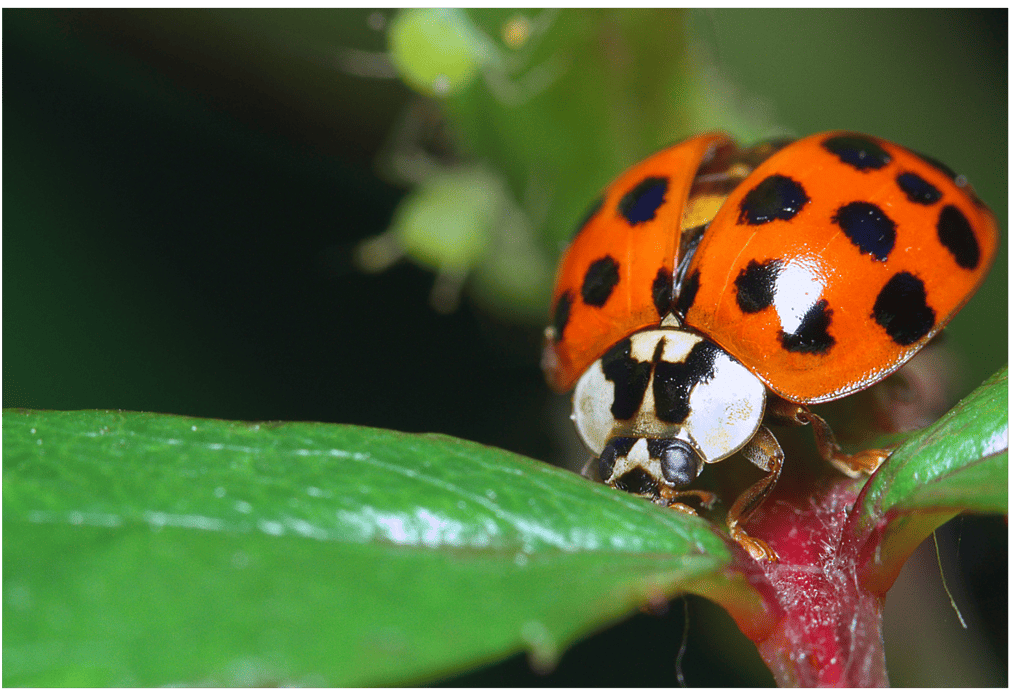
Prevention is critical when it comes to dealing with plant pests. Regularly inspecting plants for signs of pests, keeping them clean, and providing the proper amount of light and water can all help prevent infestations. Additionally, quarantining new plants before introducing them to other plants in the home can help prevent the spread of pests.
In summary, while plant pests can be frustrating, there are several methods for dealing with them. Identifying the problems, physically removing them, using insecticidal soap or horticultural oil, introducing natural predators, and prevention can all help keep houseplants healthy and pest-free.
Choosing Houseplants for Hanging Baskets
Hanging baskets are a great way to add greenery and life to any room. They can be hung from the ceiling, on walls, or from a plant stand. When choosing houseplants for hanging baskets, there are a few things to remember.
Consider the Lighting
The lighting in the room is the first thing to consider when choosing houseplants for hanging baskets. Some plants require full sun, while others prefer indirect light. It’s important to select plants that will thrive in the amount of light available in the room.
Choose the Right Size
Another thing to consider is the size of the plant. Hanging baskets come in different sizes, so choosing a plant that will fit comfortably in the basket is essential. Choosing a plant that will grow smaller for the basket is also important.
Look for Low-Maintenance Plants
If you’re not an experienced gardener, choosing low-maintenance plants for your hanging baskets is a good idea. Some plants require more care than others, so selecting plants that are easy to care for is important.
Best Houseplants for Hanging Baskets
Here are some of the best houseplants for hanging baskets:
- Spider Plant: This plant is easy to care for and grows well in low to medium light. It also produces small white flowers.
- Boston Fern: This plant thrives in high humidity and indirect light. It’s a great choice for a bathroom or kitchen.
- Pothos: This plant is easy to care for and grows well in low to medium light. It also has a trailing habit that makes it perfect for hanging baskets.
- String of Pearls: This plant is a succulent that has small, bead-like leaves that trail down from the basket. It’s a great choice for a sunny room.
- English Ivy: This plant is easy to care for and grows well in low to medium light. It also has a trailing habit that makes it perfect for hanging baskets.
When choosing houseplants for hanging baskets, it’s important to consider the plant’s lighting, size, and maintenance requirements. By choosing the right plants, you can create a beautiful and low-maintenance display in any room.
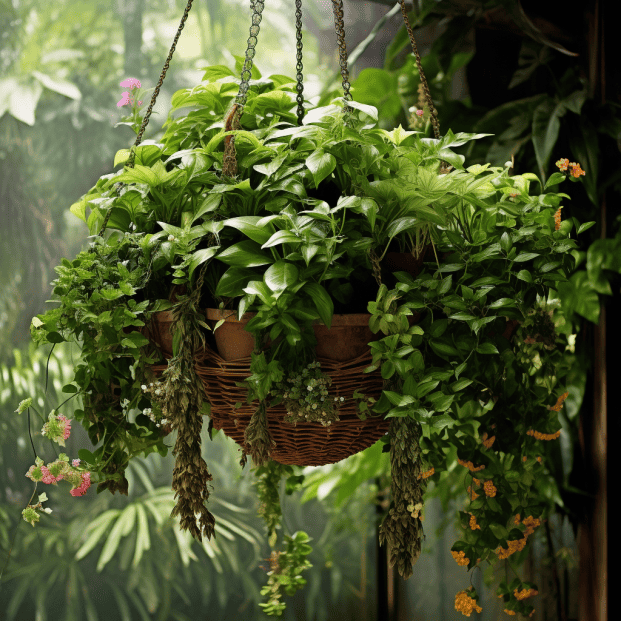

Incorporating Plants into Your Lifestyle
Houseplants are not just decorative elements that can add a touch of green to your home. They can also improve your overall well-being and create a more relaxing environment. Incorporating plants into your lifestyle can be a great way to reduce stress, improve air quality, and increase productivity.
One way to incorporate plants into your lifestyle is to choose plants that suit your specific room. For instance, if you have a room with a lot of natural light, consider plants that thrive in bright, indirect light, such as snake plants or spider plants. On the other hand, if you have a room with low light, consider plants that can tolerate low-light conditions, such as pothos or ZZ plants.
Another way to incorporate plants into your lifestyle is to choose plants that complement your decor. For example, if you have a room with a lot of neutral colors, you might want to consider plants with bold, colorful leaves, such as Croton or calathea. If you have a room with a lot of patterned rugs, you might want to choose plants with simple, solid-colored leaves, such as a rubber plant or a fiddle leaf fig.
Incorporating plants into your lifestyle can also mean choosing plants that fit your lifestyle. If you have a busy lifestyle and don’t have a lot of time to care for plants, you might want to choose low-maintenance plants, such as succulents or cacti. On the other hand, if you have more time to devote to plant care, you might want to consider plants that require more attention, such as ferns or orchids.
Overall, incorporating plants into your lifestyle can be a great way to improve your overall well-being and create a more relaxing environment. By choosing plants that suit your specific room, complement your decor, and fit your lifestyle, you can create a beautiful and healthy home.
Frequently Asked Questions
What are some good indoor plants for low-light rooms?
Some good indoor plants for low-light rooms include snake plants, ZZ plants, pothos, and ferns. These plants can thrive in areas with minimal natural light and are relatively easy to care for.
What are the best indoor plants for the living room?
The best indoor plants for the living room depend on the amount of natural light the room receives. If the living room has ample sunlight, plants like fiddle leaf figs, rubber plants, and birds of paradise are great options. For low-light living rooms, snake plants, peace lilies, and pothos are good choices.
Which houseplants are considered lucky for the bedroom?
Some houseplants that are considered lucky for the bedroom include snake plants, peace lilies, and bamboo plants. These plants are believed to promote relaxation, purify the air, and bring good luck and prosperity.
What are some beginner-friendly houseplants for the bedroom?
Some beginner-friendly houseplants for the bedroom include spider plants, pothos, and snake plants. These plants are relatively easy to care for and can thrive in a variety of lighting conditions.
Are there any indoor plants that are harmful to have in the bedroom?
Yes, there are some indoor plants that can be harmful to have in the bedroom. Plants like the English ivy, chrysanthemums, and philodendrons can cause allergic reactions and irritate the skin and eyes. It’s important to research a plant’s potential toxicity before bringing it into the bedroom.
How do I select the right plant for my room?
When selecting the right plant for your room, consider the lighting conditions, temperature, and humidity levels. Choose a plant that can thrive in the specific environment of your room. Additionally, consider the size of the plant and how it will fit in with the overall decor of the space.

